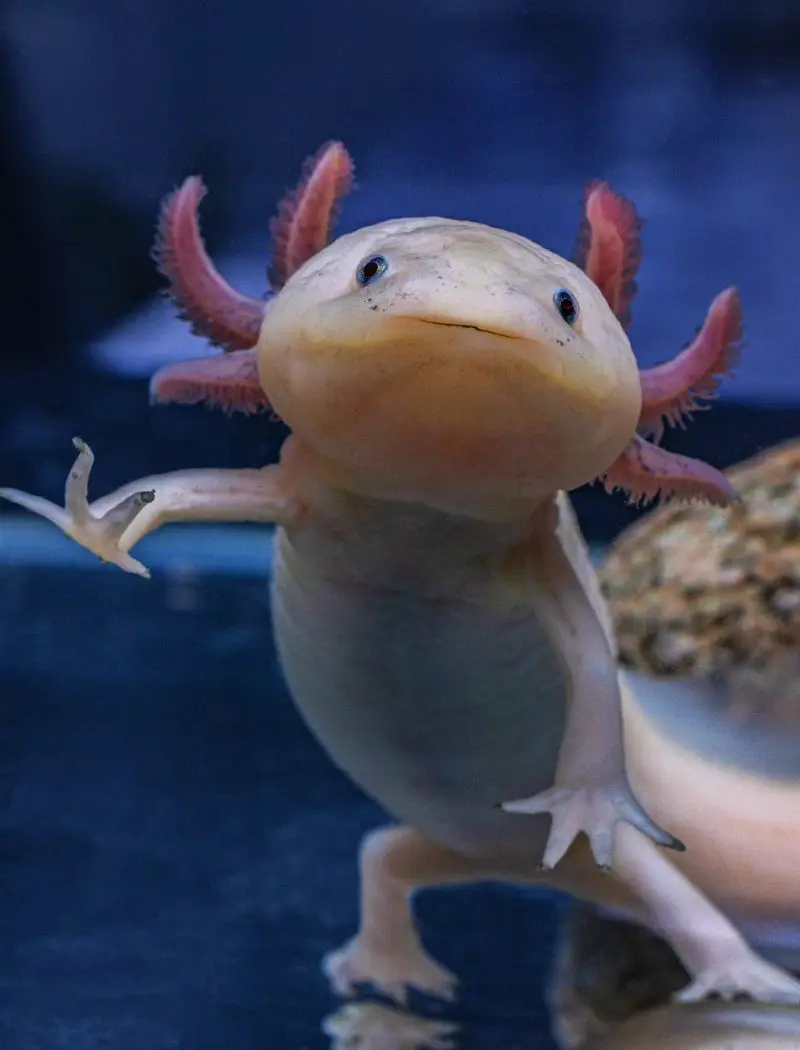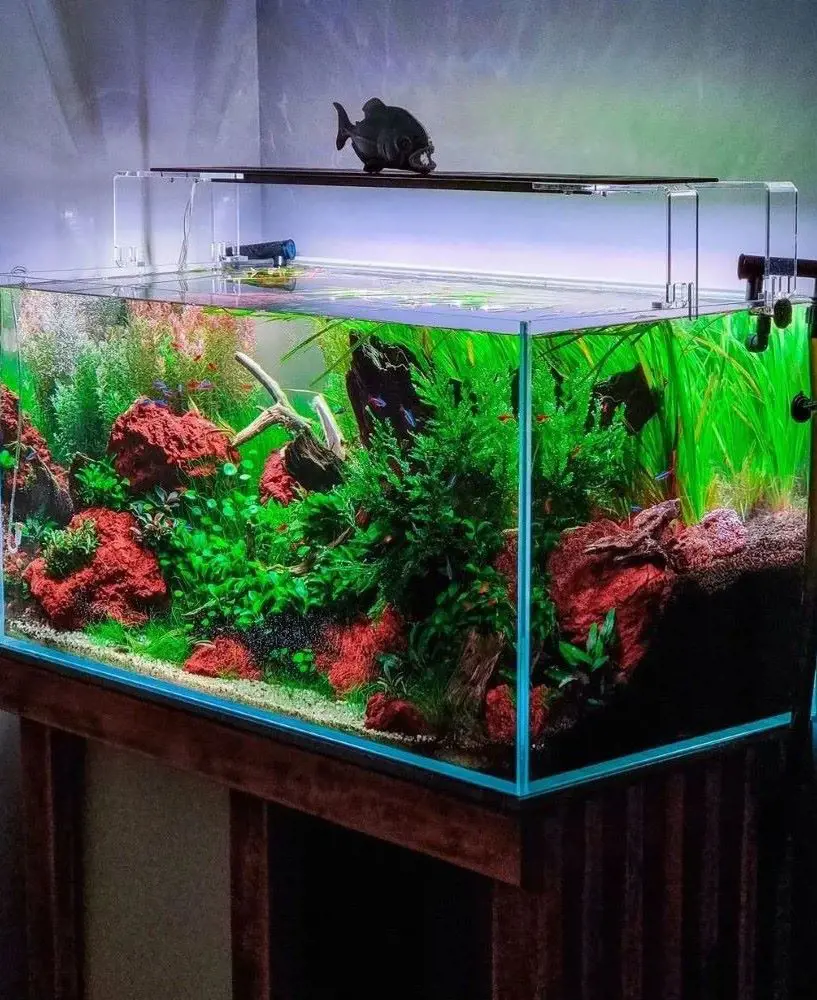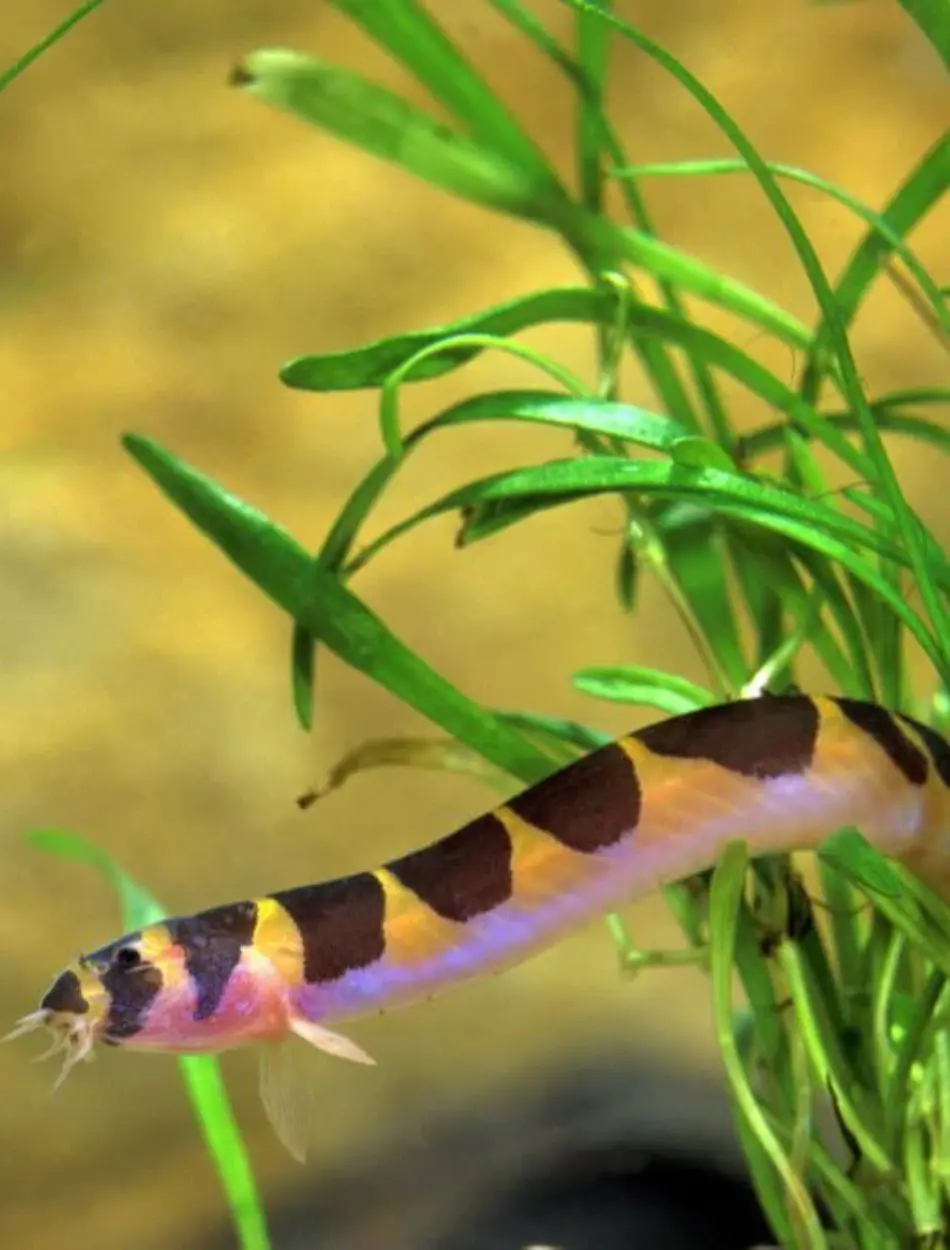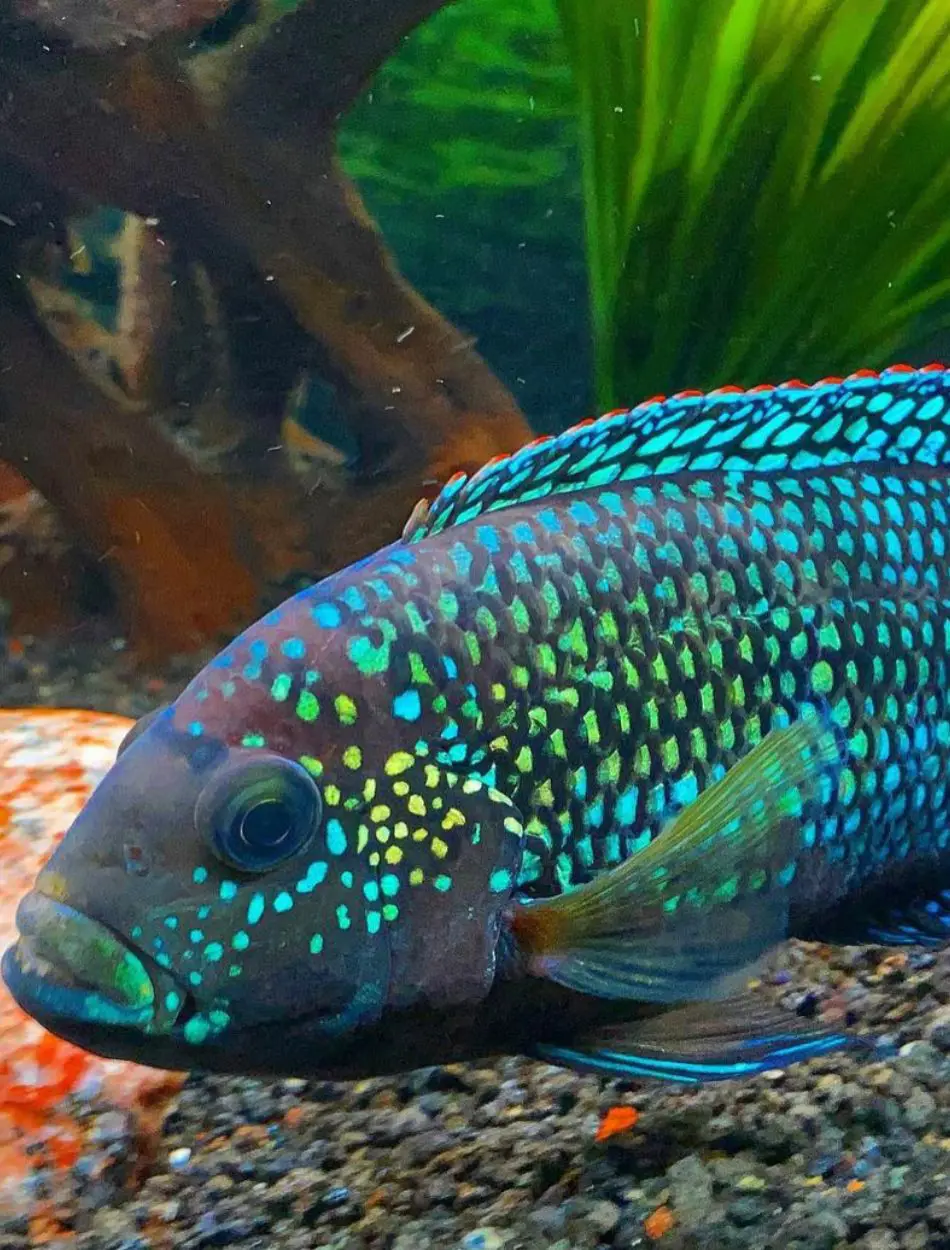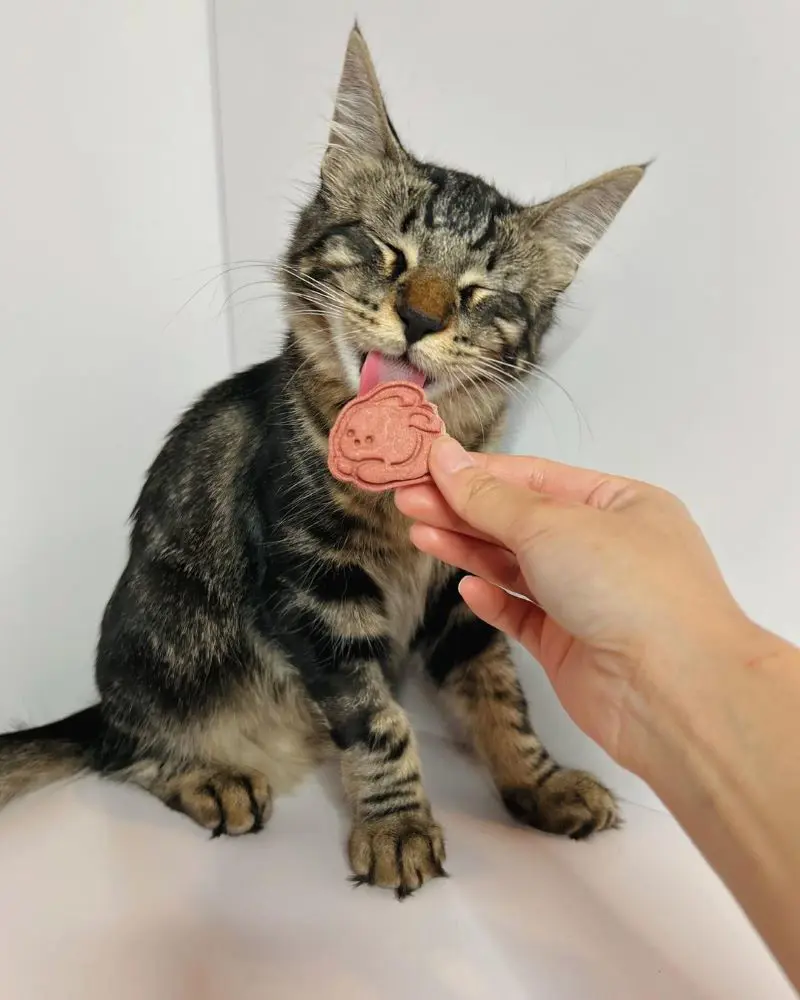Harlequin Rasbora Care Guide, Breeding And Tank Mates

Harlequin Rasbora is a small, freshwater fish, known for its striking looks and lively behavior. They are peaceful and social fish that thrive in aquariums of at least six or more fishes.
The most distinctive feature of the Harlequin Rasbora is its vibrant, triangular patch of black or dark brown located on the rear half of its body, just before the base of the tail. The patch resembles a harlequin mask, giving the fish its common name. They exhibit a calm and active demeanor, swimming gracefully in the middle to upper levels of the aquarium.
Characteristics Of Harlequin Rasboras
| Family | Cyprinidae |
| Origin | Southeast Asia, Malaysia, Singapore, Sumatra, Thailand |
| Social | Peaceful, suitable for community aquarium |
| Tank Level | Top to mid-dwelling |
| Minimum Tank Size | 10 Gallon |
| Diet | Omnivore |
| Breeding | Egglayer |
| Care | Intermediate |
| pH | 6.0 To 7.5 |
| Hardness | Upto 12 dGH |
| Temperature | 73 To 82 F |
Harlequin Rasboras are known for their peaceful and active behavior. The body is primarily a bright, shimmering orange, which contrasts sharply with a large, triangular, black or dark brown patch located on the rear half of the body, just before the base of the tail.
They thrive in schools of at least six individuals, displaying calm and engaging movements in the middle to upper regions of the aquarium. They are compatible with other peaceful species, making them an excellent choice for community aquariums. Their vibrant colors and social behavior make them a popular addition to home tanks.
Origin And History
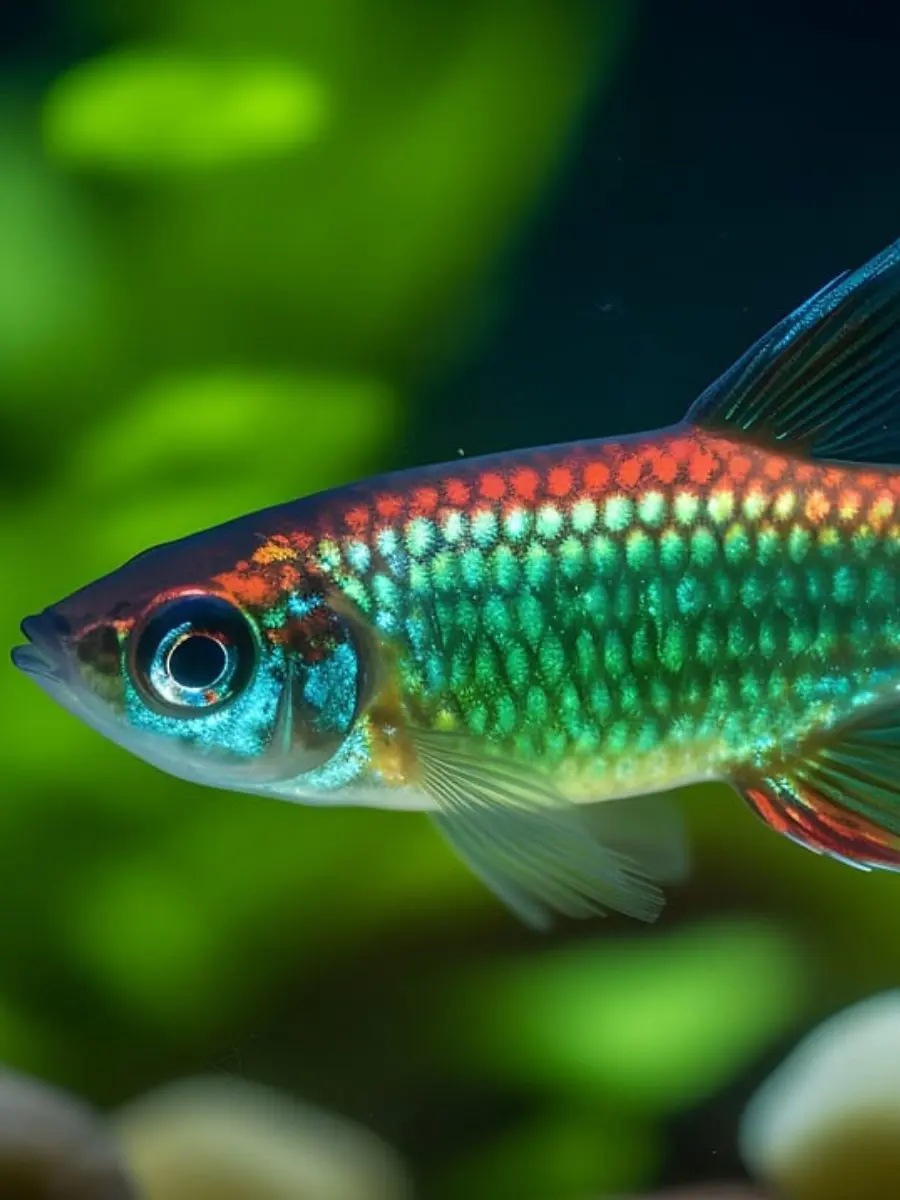
Harlequin Rasbora is native to Southeast Asia, with its origins primarily in Malaysia, Singapore, and Indonesia. First described scientifically by Wilhelm Michel in 1904, this species belongs to the Cyprinidae family, known for its diverse range of freshwater fish.
In Malaysia, it is found in Malaysia's freshwater systems, including slow-moving rivers and streams. In Singapore, it inhabits the island's lowland streams and small rivers, which are characterized by gentle water flow and abundant vegetation. In Indonesia, the Harlequin Rasbora is native to parts of Sumatra and Borneo. These regions feature diverse freshwater habitats, such as peat swamps and forested streams, where the fish thrive.
This distribution reflects the species' adaptability to a range of freshwater habitats, from forested streams to slow-flowing rivers. The natural habitats of Harlequin Rasbora provide ample cover and breeding grounds, supporting its schooling behavior and peaceful nature.
Colors And Markings Of Harleqin Rasbora
Harlequin Rasbora is distinguished by its striking body coloration, which is predominantly a bright, shimmering orange. This vivid hue extends from the head to the midsection of the fish, creating a warm and eye-catching appearance.
The vibrant orange coloration is particularly pronounced under good lighting conditions, where the fish's iridescence is most noticeable. The body’s orange color is not uniform but features a glossy sheen that reflects light, making the fish appear to glow. This shimmering effect is due to the arrangement of the fish's scales and the way they interact with light, contributing to the overall vibrant look. The vividness of the orange color can vary slightly among individual fish, influenced by factors such as diet, water quality, and environmental conditions in the aquarium.
One of the most notable features of the Harlequin Rasbora is its black or dark brown triangular patch located on the rear half of the body. This patch, often referred to as a harlequin mask, is situated just before the base of the tail. The triangular shape of the patch is characterized by its wide base at the rear and tapering towards the front. Harlequin Rasbora's fins are generally transparent with a slight orange or pinkish tint. While the primary coloration and markings are consistent, there can be slight variations in the intensity of the orange and the darkness of the triangular patch.
Tankmates Of Harlequin Rasbora
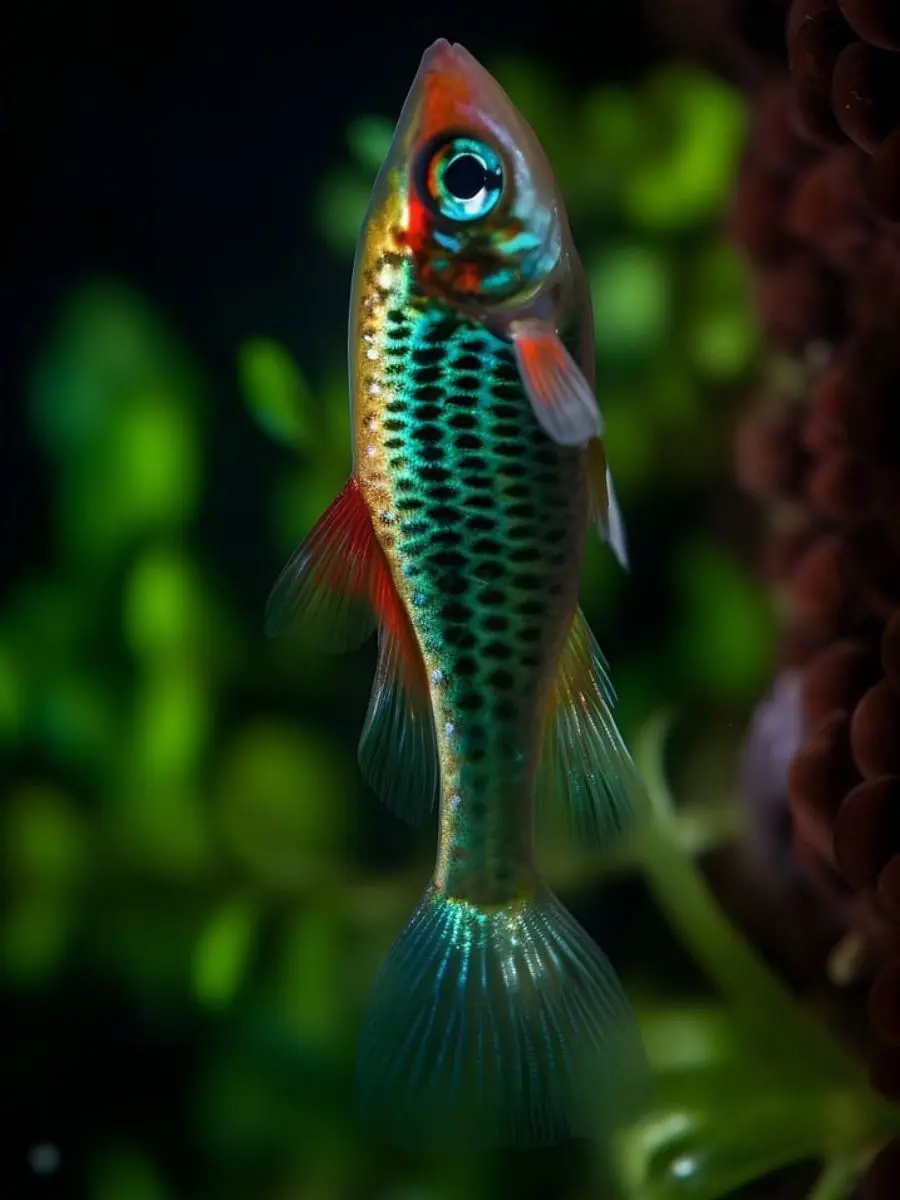
Harlequin Rasbora is a peaceful and social fish, making it an excellent tankmate for a variety of other species. When selecting tankmates, it's important to choose fish that share similar environmental needs and exhibit compatible temperaments.
Other rasbora species, such as the Sunset Rasbora or Espei Rasbora, are excellent companions. They have similar care requirements and enjoy schooling, which complements the social nature of Harlequin Rasboras. Peaceful tetras, like the Neon Tetra, Cardinal Tetra, and Rummy-Nose Tetra are compatible due to their similar size and calm disposition. They also thrive in similar water conditions. Invertebrates like Nerite Snails and Cherry Shrimp can be good tankmates.
Dwarf Gouramis, including varieties like the Powder Blue and Honey Gouramis, can coexist well with Harlequin Rasboras. They are generally peaceful and do not compete aggressively for space or resources. Corydoras species such as Corydoras pygmaeus and Corydoras aeneus are bottom-dwellers that add diversity to the tank. Small, peaceful rainbowfish, such as the Celebes Rainbow, are suitable companions. They have a similar size and non-aggressive nature.
Harlequin Rasbora Diet And Feeding
Harlequin Rasbora is a versatile and adaptable feeder with a diet primarily consisting of small live or frozen foods. They thrive on a diet that includes high-quality flake food, micro pellets, and small live or frozen foods.
Options like daphnia, brine shrimp, and bloodworms are excellent choices, providing the necessary protein and nutrients. These foods help maintain the fish's color and energy levels. Ensuring that the food is appropriately sized for their small mouths is crucial. Fine flake food and crushed pellets work well. Regular feeding and a balanced diet contribute to the overall well-being and longevity of the Harlequin Rasbora.
It is recommended to feed Harlequin Rasboras 2-3 times a day, offering only as much food as they can consume within a few minutes. Overfeeding should be avoided, as excess food can lead to water quality issues and health problems. Providing a varied diet ensures they receive all essential nutrients and prevents dietary deficiencies.
Habitat and Care
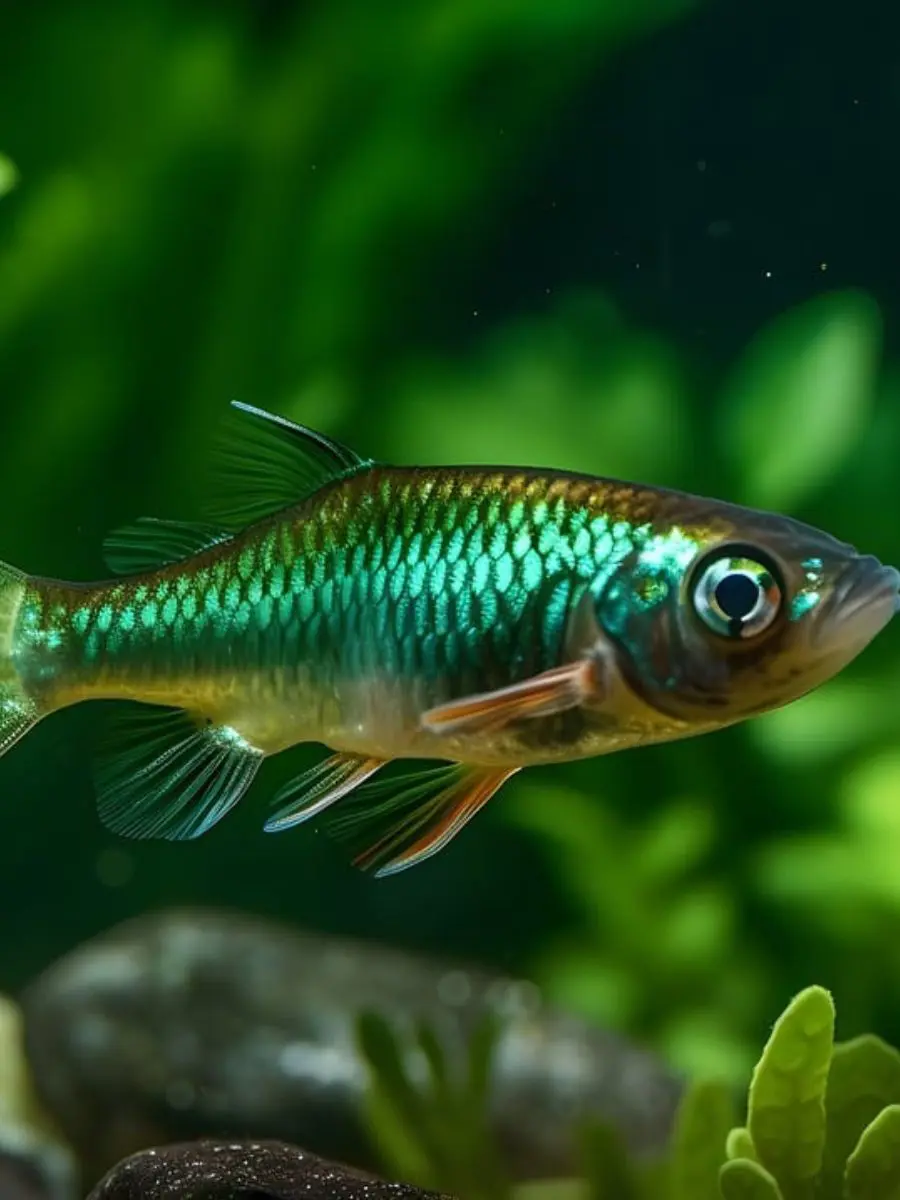
Harlequin Rasbora is a popular aquarium fish known for its vibrant coloration and peaceful nature. Understanding its natural habitat and care requirements is crucial for maintaining its health and well-being in captivity.
In the wild, it inhabits slow-moving rivers, streams, and floodplain areas. The water is usually slightly acidic to neutral, with a pH range of 6.0 to 7.5. The temperature typically ranges from 74-78°F. The water is often soft to moderately hard. Harlequin Rasboras thrives in well-vegetated environments with gentle flow.
They are commonly found in areas with abundant aquatic plants, submerged structures, and leaf litter, which provide cover and breeding grounds. These natural conditions are crucial for their well-being and should be mimicked in the aquarium setting to ensure their healthy and vibrant appearance.
Gender Differences
Gender differences in Harlequin Rasbora are subtle and primarily observed through body shape and behavior, as the fish lacks pronounced sexual dimorphism. Distinguishing between male and female Harlequin Rasboras is not always straightforward and often requires close observation of body size and breeding behavior.
Generally, males are slightly smaller and slimmer compared to females. Females tend to be slightly plumper and larger, especially when carrying eggs. This difference is most noticeable when the fish are viewed from above or when a female is gravid. During breeding periods, males become more active and display more vivid coloration, especially around the triangular black patch on their bodies.
While both genders share vibrant colors, males may exhibit slightly more intense or brighter hues when in breeding conditions. However, this difference is generally subtle and can be challenging to discern without close observation.
Breeding The Harlequin Rasboras

Breeding Harlequin Rasboras in captivity can be a rewarding experience, though it requires careful preparation and attention to detail. Set up a separate breeding tank, ideally a 10-20 gallon aquarium, to ensure a controlled environment.
Provide a soft substrate, such as fine gravel or a mesh breeding mat, to facilitate egg collection. Maintain slightly acidic to neutral water with a pH of 6.0-7.0. Temperature should be around 76-78°F. Ensure the water is clean and well-filtered, but avoid strong currents. Add fine-leaved plants, such as Java moss, or small, floating plants, where the fish can lay their eggs. These plants also provide cover and reduce stress.
Also, maintain excellent water quality through regular water changes and careful monitoring. Clean the tank without disturbing the fry and avoid overfeeding to prevent water contamination.
Harlequin Rasbora Health Problems
Harlequin Rasboras are generally hardy and resilient fish, but like all aquarium species, they can be susceptible to certain health problems. Regular monitoring and prompt attention can help manage and prevent these issues.
Fin Rot
Fin Rot is a common harlequin rasbora disease characterized by the progressive decay and deterioration of the fins and tail. It is usually caused by bacterial infections, though it can also result from poor water quality or physical damage. The condition manifests as frayed, discolored, or eroded fin edges, which may appear black, brown, or grayish. In severe cases, the disease can lead to significant fin loss and compromise the fish's overall health. Early detection and treatment are crucial to prevent further damage and ensure recovery.
Fungal Infection
Fungal Infection in Harlequin Rasboras is a condition where a fungus infects the fish, usually manifesting as cotton-like growths or lesions. This infection can affect the skin, fins, and gills, and it often occurs due to poor water quality, injuries, or stress. Fungal infections usually arise from inadequate water quality, such as high levels of ammonia, nitrites, or nitrates, which weaken the fish’s immune system, making them more susceptible to fungal pathogens. Treatment involves improving water quality through regular changes and proper filtration and maintaining good tank hygiene.
Velvet Disease
Velvet Disease in fish, caused by the protozoan parasite Oodinium, is a common and serious condition characterized by a distinctive velvety or dusty appearance on the fish’s skin, gills, and fins. The disease is often presented as a gold or brownish coating that resembles fine dust or velvet. The parasite attaches itself to the fish’s external surfaces, leading to irritation and damage.Timely treatment and proper tank management are crucial to controlling and preventing Velvet Disease.
Dropsy
Dropsy is a serious and often fatal condition in fish, characterized by a range of symptoms resulting from fluid accumulation in the body cavity. The condition is typically a sign of underlying issues such as kidney failure, bacterial infections, and other systemic problems. One of the most noticeable signs of Dropsy is swelling or bloating of the fish's body. This occurs due to fluid accumulation in the tissues. Dropsy is often challenging to treat, and early intervention is crucial for the best chance of recovery.
Recent posts
Fish
Axolotl (Mexican Walking Fish): Species Profile
Axolotl is a walking fish that is known to captivate fish enthusiasts and scientists. They remain aquatic their whole life and stay in the larval stage. They are also known for their regrowing ability and solitary nature. This article discusses the h...
20 Coolest Freshwater Fish To Add Pop And Color To Your Aquarium
With so many options of freshwater fish available, selecting the right species can be a daunting task. Due to careful breeding, there are thousands of species ready at your disposal to turn your room into a fish lover's paradise. From the vibrant col...
20 Best Betta Fish Tank Mates
Selecting suitable Betta fish tank mates is a delicate work that calls for a considerate balance between companionship and compatibility. Although renowned for their colorful colors and flowing fins, Betta fish are equally notorious for their territo...
Why Is My Fish Tank Cloudy?
Cloudy fish tanks can be frustrating for any aquarium owner. Especially if one has put in the necessary effort to accomplish a beautiful underwater setting. Whether you are an inexperienced aquarium holder or one of the pros, cloudy water may be the ...
20 Long Freshwater Fish For Aquarium
Having a range of long, gorgeous fish in your freshwater aquarium can make it an immensely fulfilling experience. Choosing the right fish is the first step to an exciting freshwater aquarium, and long freshwater fish are among the best options. ...
17 Cichlid Tank Mates For Your Aquarium
Cichlids are one of the diverse and captivating freshwater fish that are known for their vibrant colors. They are found in tropical America, mainland Africa, Madagascar, and southern Asia. These freshwater fish have elongated streamlined bodies...
